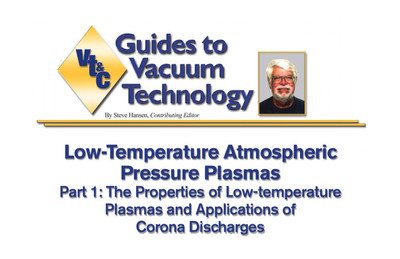Featured Article: Low-Temperature Atmospheric Pressure Plasmas
Posted by Steve Hansen on on 29th Nov 2021
ETP is proud to feature this article that originally appeared in the April 2020 edition of Vacuum and Coating Magazine. Since 2000, Vacuum Technology & Coating Magazine has been the industry's leading source for the latest articles, news, and product and service information. Every issue of VT&C includes a product showcase focused on a specific topic relevant to Vacuum Processing. For more info and to keep up with their publications, you can access their website at vtcmag.com.
Access the original article and explore the April 2020 edition from VT&C here.
Part 1 - The properties of low-temperature plasmas and applications of corona discharges
The two most recent columns dealt with low pressure glow discharges. This two-part series will provide an introduction to the mechanisms and applications of low-temperature atmospheric pressure plasmas. Low-temperature atmospheric plasmas include corona discharges, dielectric barrier discharges and plasma jets. These are all examples of non-equilibrium (non-thermal or cold) plasmas. Corona discharges have found applications over many years and will be covered in this part. Research, development and production implementation of dielectric barrier discharges and plasma jets has grown tremendously over the past 3 decades. These will be addressed in the second part. Not included in this series of articles are high temperature atmospheric plasmas such as arcs.
In a 2007 article, J. Reece Roth [1] stated “Any plasma processing task possible with a glow discharge in vacuum can also be performed by a glow discharge at one atmosphere, provided that long mean free paths are not required.” In a 2011 paper, Daphne Pappas [2] wrote:
Industrial plasma engineering utilizing atmospheric equipment has a promising future in materials functionalization, deposition of organic and inorganic coatings, and sterilization of biomaterials and biocidal materials for the following reasons:
- Unique chemical environments can be obtained through the formation of free electrons, radical, and charged and excited species;
- Provided a plasma system is available, the process cost and equipment maintenance is very low; and
- Plasma processes performed under atmospheric pressure conditions are ecofriendly as the formation of by-products is minimal, while the produced waste is insignificant.
Low-Temperature (Cold) Plasmas
The low pressure parallel plate electrode glow discharges discussed in the February and March columns are marked by having an electron temperature (Te) that is higher than the molecule or ion gas temperatures (Tg). As shown in Figure 1, as the pressure increases the electron and gas temperatures merge as the mean free paths decrease. This will normally result in a thermal (hot) plasma. In the figure, the gas temperatures at 10-3 to 10-2 Torr are in the room temperature range while the electron temperatures are orders of magnitude higher. At atmospheric pressure, temperatures can approach 10,000 K.
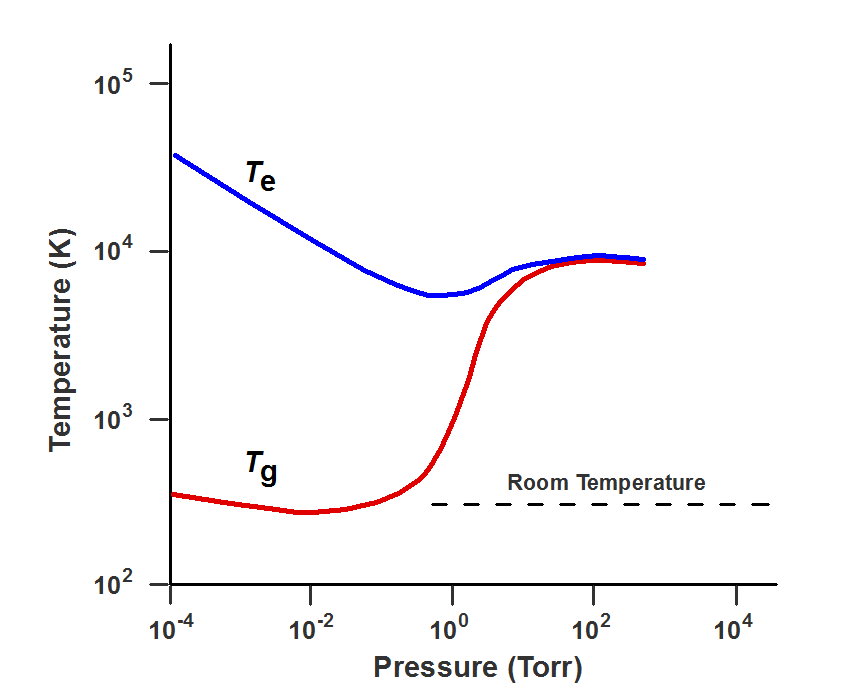
Figure 1. Electron and gas temperatures vs. pressure for a glow discharge. Low temperature plasmas will limit the gas (heavy particle) temperature to the room temperature range.
Low-temperature plasmas are also termed nonthermal, cold or non-equilibrium plasmas. In this case, there is no thermodynamic equilibrium because Te is much higher than Tg. As an example, in a fluorescent lamp tube the electron temperature may be on the order of 104 K while the gas is barely above room temperature. The formation of a stable cold plasma requires mechanisms that prevent the discharge from becoming “hot.”
The Corona Discharge
Coronas have been studied for many years and have been observed for thousands of years. St. Elmo’s fire is a natural manifestation of atmospheric electricity caused by the accumulation of charge on elevated sharp objects such as masts, steeples and the like. Lightning rods serve to harmlessly bleed off excess charge or, in the event of an actual lightning strike, to provide a point where the lightning current can be conducted to ground with minimal damage. With the development of electrostatic machines, it became possible to study the corona without having to resort to flying kites.
Corona discharges are created when the electric field around a conductor is sufficiently high enough to ionize the gas but not high enough to initiate an arc discharge. In air, a corona is generally visible as a bluish glow that may also show filaments. Very low current corona discharges may not be visible. The creation of the necessary field is enhanced by pointed or other small radius electrodes. The brightness of the corona can be enhanced by placing a metal plate at some distance from the active electrode although another electrode is not required as the corona is a unipolar discharge. For DC coronas, the negative corona will form more easily. The positive corona has a more brush like appearance. Figure 2 from [3] is a depiction of the corona from a positive electrode. The ions that are created will stream away from the electrode forming what has been termed an ionic wind or breeze.
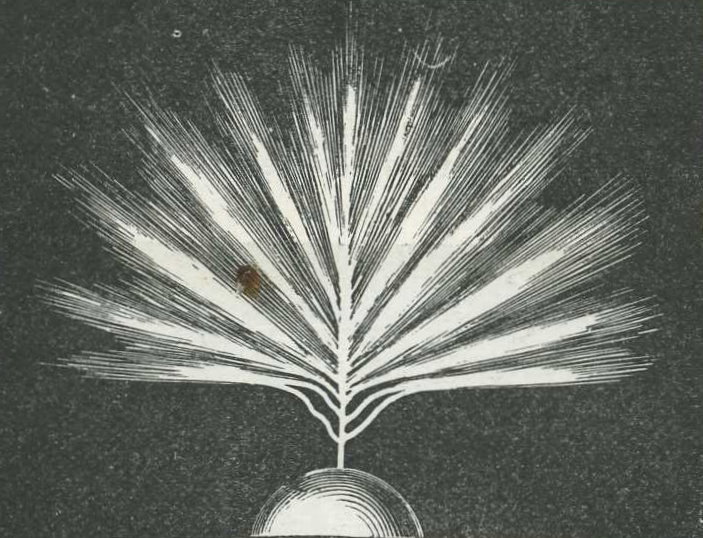
Figure 2. Depiction of the corona discharge. Illustration from [3].
Corona is an issue with high voltage apparatus and power lines. Byproducts of the corona discharge are lost energy and audible as well as electrical noise (electromagnetic interference or EMI). Mitigation generally includes providing larger spacings between elements, insulation and the use of large, smooth rounded surfaces on terminals.
Coronas are used in a number of applications including air ionizers, ozone generators, electrostatic precipitators, static charge neutralization and photocopiers (xerography). Corona can also be used for treating polymer materials in order to modify the surfaces by raising the surface energy through the creation of polar groups. This improves wettability for subsequent bonding. Coronas can also be used to remove contaminants from a variety of surfaces. Another application is in the atmospheric pressure ion sources in several types of mass and ion mobility spectrometers.
For practical applications, there are several common configurations. As illustrated in Figure 3, these include point sources (single or in an array), a thin wire in a cylindrical tube, or an array of parallel thin wires between parallel plates. In the case of point sources, a metal plate (grounded or floating) may be used to enhance the corona intensity or directionality. In all cases, the discharge operates in the low current – high voltage Townsend region, before electrical breakdown (sparkover). For a depiction, please refer to Figure 2 in the February 2020 column.
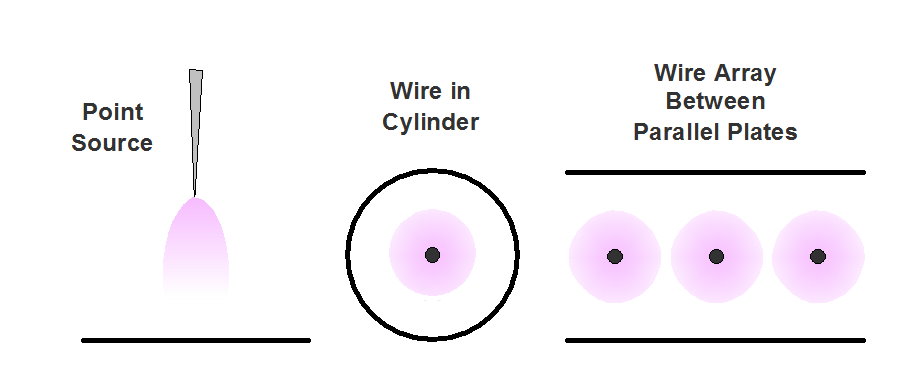
Figure 3. Common corona discharge electrode configurations.
Small Scale Laboratory Applications of Corona
Electro-Technic Products [4] of Chicago is a long standing supplier of corona treatment equipment and high voltage/high frequency power supplies for a variety of purposes. This section will be concerned with their handheld generators, models BD-20A and BD-20AC. These incorporate a Tesla resonant transformer that produces an output of 25-50 kV at 4-5 MHz. The models mainly differ by the types of electrodes that are supplied. Devices of this type will be familiar to those who may have used the products for the leak testing of glass vacuum systems. If the tip is placed near a small hole or crack, the current will pass through and will light a glow discharge within the chamber. Today they are more often used to detect cracks in sealed glass ampoules and in other non-conductive vessels.
Figure 4 shows the BD-20AC with a variety of corona treatment electrodes. The device can be used for the small-scale corona treatment of various polymers. This serves to improve adhesion through improvement in surface wettability. Generally, the electrode would be placed at a distance of 1/8 to 1/4 inch from the polymer being treated. Two of the electrodes are depicted in Figure 5 [5]. The 1 inch diameter circular electrode is generally used for flat surfaces and the “field effect” electrode may be used for irregularly shaped objects. This electrode consists of a wire with several small balls that act as point sources for the corona. The wire is held between a pair of spheres that are connected to a cross member. This configuration produces a linear array of corona emitters.
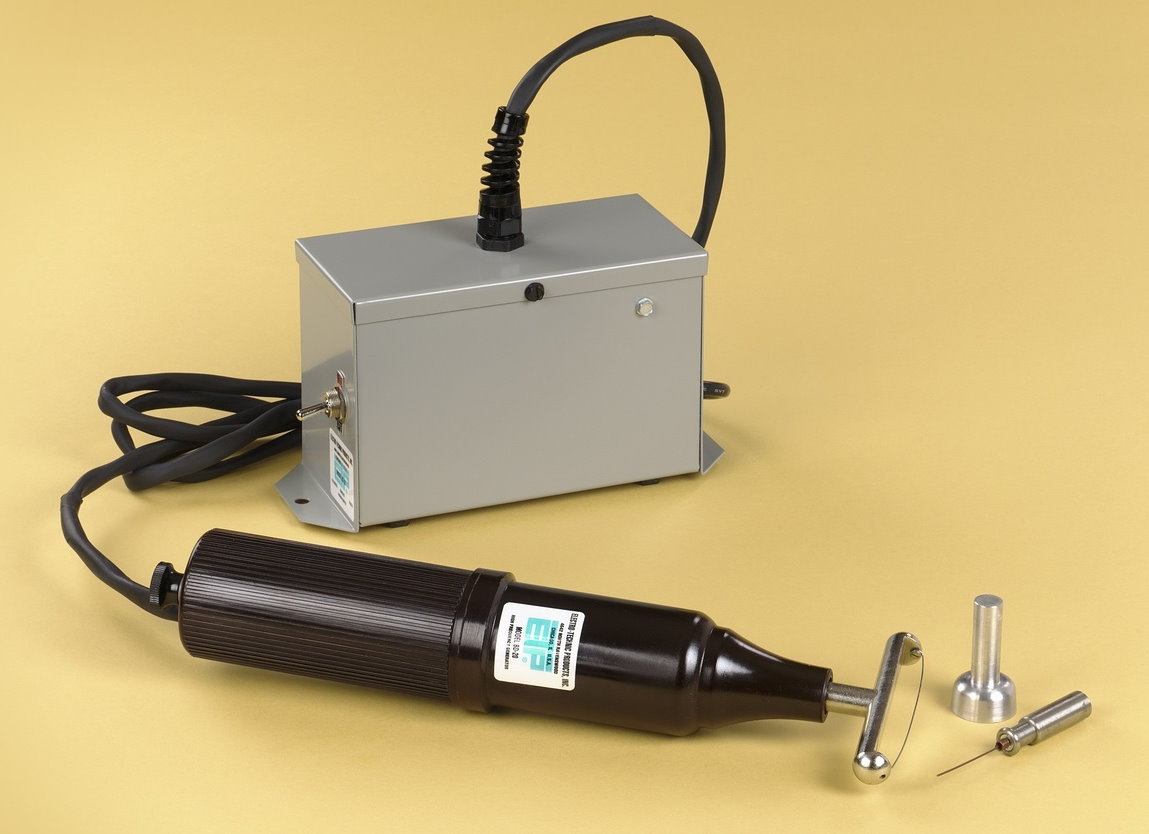
Figure 4. BD-20AC laboratory corona treatment device. Photograph courtesy of Electro-Technic Products, used with permission.
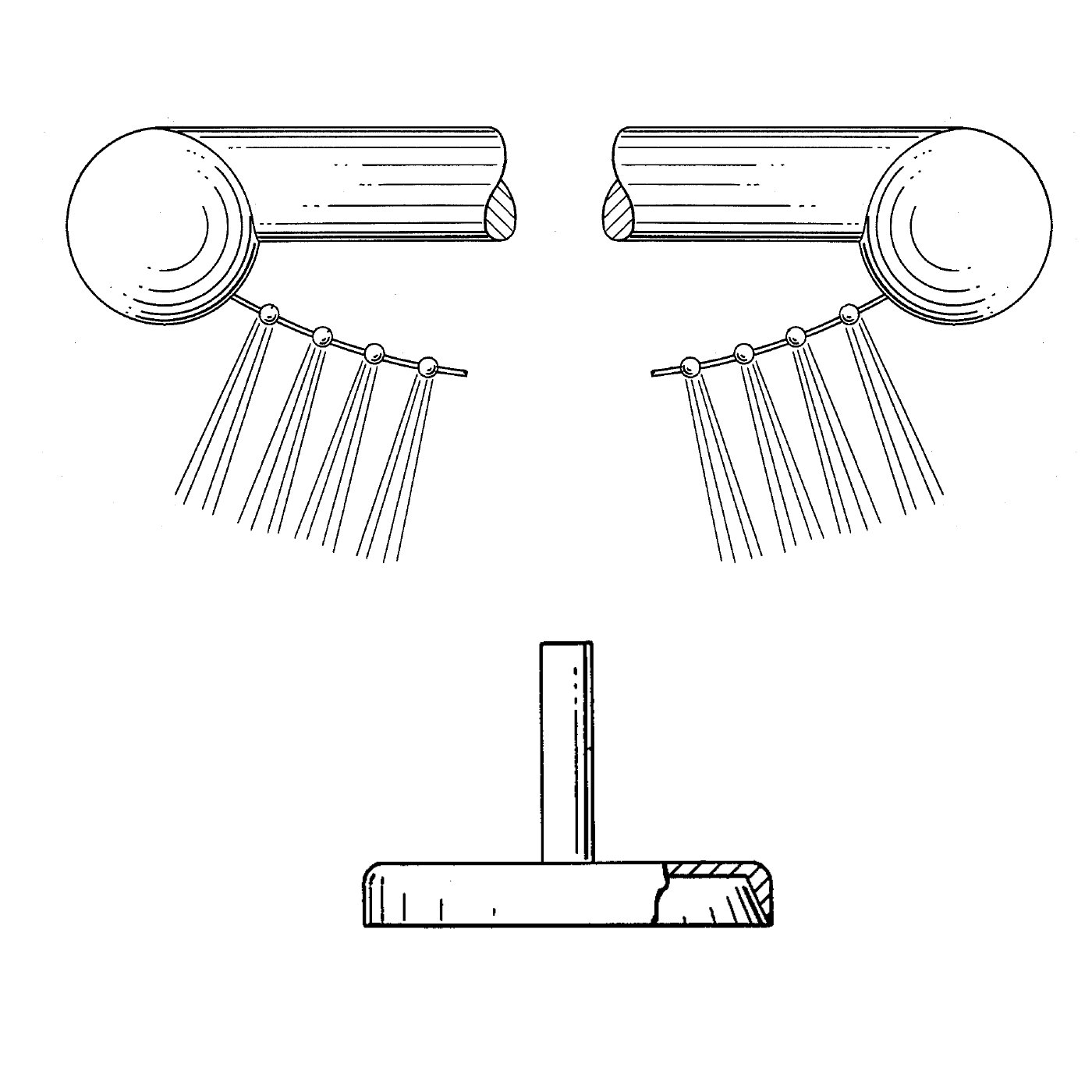
Figure 5. Corona treatment electrodes. Top, wire with corona field emitters; bottom circular electrode with sharpened edge on the circumference. Illustrations adapted from [5].
An interesting biological application for the point source is for the mixing of sera with small amounts of aqueous solutions. A specific use is the clinical procedure for the testing of antigens in blood sera using the microdroplet lumphocyte cytotoxisity test. This procedure, described in [6], involves the placement of the antisera into the wells of a typing tray and covering the contents of each well with a thin layer of mineral oil. The oil prevents the evaporation of the antisera. Microdroplets of lymphocytes are then added to each well.
The layer of oil inhibits the mixing even though the lymphocyte solution is denser than the oil. This is a surface tension issue. One option is to use a thin wire as a mixer. This is a very time consuming process and a thorough cleaning of the wire is necessary to prevent cross contamination of the well in the tray. A more efficient method is the application of corona. This process is depicted in Figure 6.
The process involves placing the non-conductive typing tray on a metal plate. The plate serves as a floating electrode that helps to direct the corona to the well. The corona tip is held about 2-3 inches above the wells and is moved in a crisscross pattern. The corona temporarily reduces the surface tension of the mineral oil. The alternating field also flips the orientation of the water molecules which provides a mechanical agitation action. A summary of the process is included in the BD-20A manual.
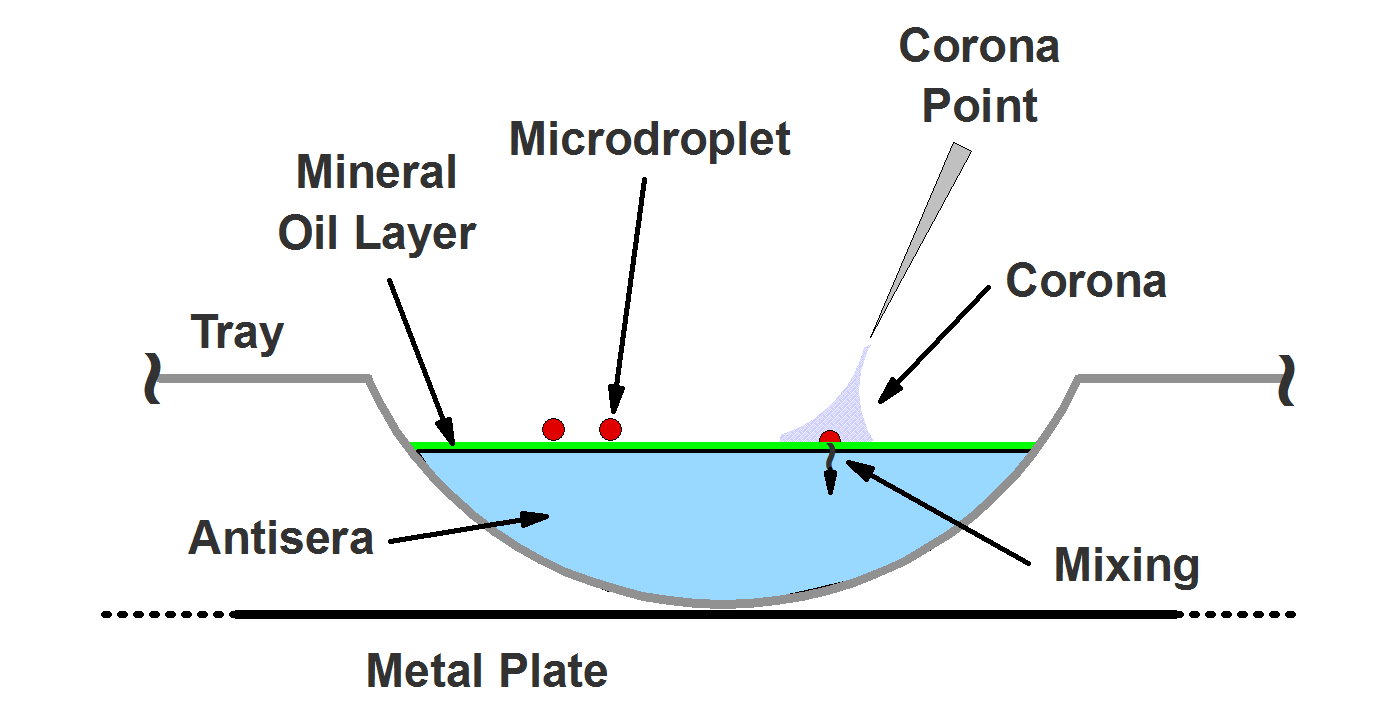
Figure 6. Microdroplet mixing process using a corona discharge (not to scale).
Corona Treatment of 3D Substrates
Flat surfaces are much easier to treat on a production scale than are contoured (3D) surfaces. For flat substrates, the distance from corona source to the substrate is unvarying. For substrates with complex shapes, a different scheme is required. An example is given in Manbe et al. of Toyoda Gosei Co., Ltd. [7]. The application is the treatment of large polymer moldings (e.g. an instrument panel) as used in the automotive industry. These generally require additional fabrication steps including adhesive bonding, painting or printing and thus require treatment.
Corona treatment offers simplicity as opposed to traditional methods such as flame or acid treatments. Low pressure plasma treating is applicable but entails the complexity of large chambers and vacuum systems along with longer cycle times.
Figure 7 depicts the approach. A jig body is made from epoxy using the underside of the panel as the mold. This is then metalized to form the counter electrode. Additionally, the jig body includes recesses where there are openings in the polymer that is being treated. These openings would include such features as air vents in the case of the automobile instrument panel. The recesses are fitted with non-conductive inserts of rubber or resin. This is necessary to prevent any disruption of the corona, e.g arc formation, where the metallization might be exposed directly to the discharge.
In order to track the surface contours, the electrodes are attached to an industrial robot. A computer is programmed to move the robot arm in accordance with the contours of the object being treated. The generator specified is 350 watts at 28 kV and 20-30 kHz.
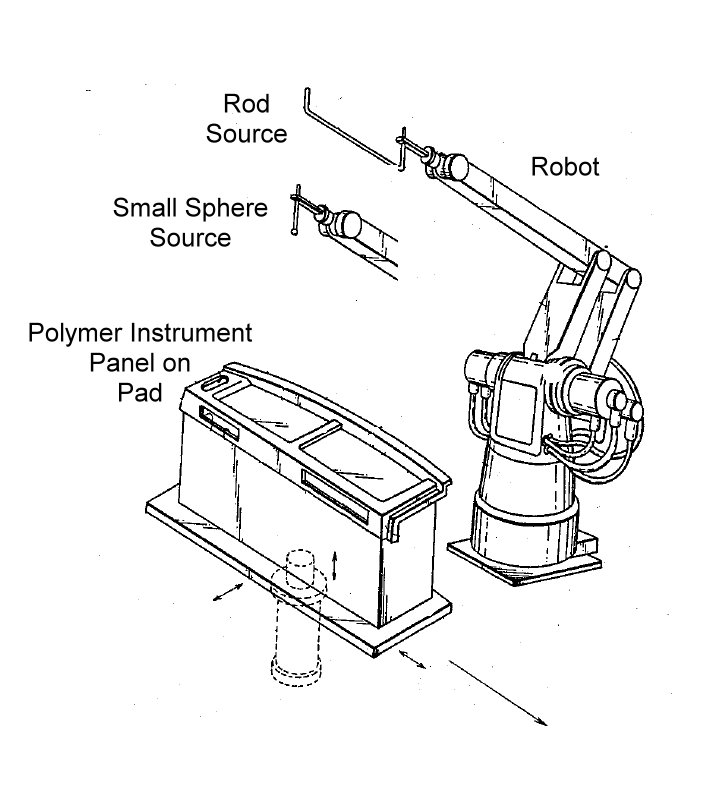
Figure 7. Corona treatment apparatus for 3D molded substrates. Illustration adapted from [7].
There are two electrode configurations. For the relatively planar surfaces such as the frame around the panel a U-shaped rod electrode is used. This is fabricated from 14 mm diameter stainless steel. This is held at a distance of about 10 mm from the surface and translates at a speed of about 150 mm/sec, more or less depending upon the amount of exposure that is required. The bends in the U act to reduce the electric field at the ends of the bar thereby suppressing corona formation at those locations.
The other electrode is spherical in shape with a radius of 7 mm, slightly larger than the radii of the panel corners. As with the case of the rod electrode, the gap is maintained at about 10 mm.
The treatment process consists of a first pass using the rod electrode and then the contours are treated with the spherical electrode.
Some Corona Treatment Videos
Tantec A/S of Lunderskov Denmark is a major supplier of corona treatment components and systems. Their product pages have some excellently produced videos showing several systems in action. The pre-printing treatment of cables and pipes is shown in [8]. The treatment of small plastic products is shown in [9].
Static Control in Flat Panel Production
As noted in the introduction, corona discharges have found wide use for static elimination and particulate control. The example in this section relates to the manufacturing process for large flat panel displays as developed by Lu et al. [10] of Au Optronics Corp.
Static charge build up on substrates attracts contaminants (dust, etc.) and is a serious issue with any product that requires a high level of cleanliness. Typical methods of static mitigation include grounding, humidity control and static charge neutralization with an ionizer. A common type of ionizer is the air-added system. This consists of a manifold with a linear array of pointed electrodes that are mounted in apertures in the manifold. Each electrode is surrounded by a nozzle. Air passing through each nozzle becomes ionized. Directed toward the substrate, the ionized air neutralizes the static charge in the substrate. The equipment and some enhancements are depicted in Figure 8.
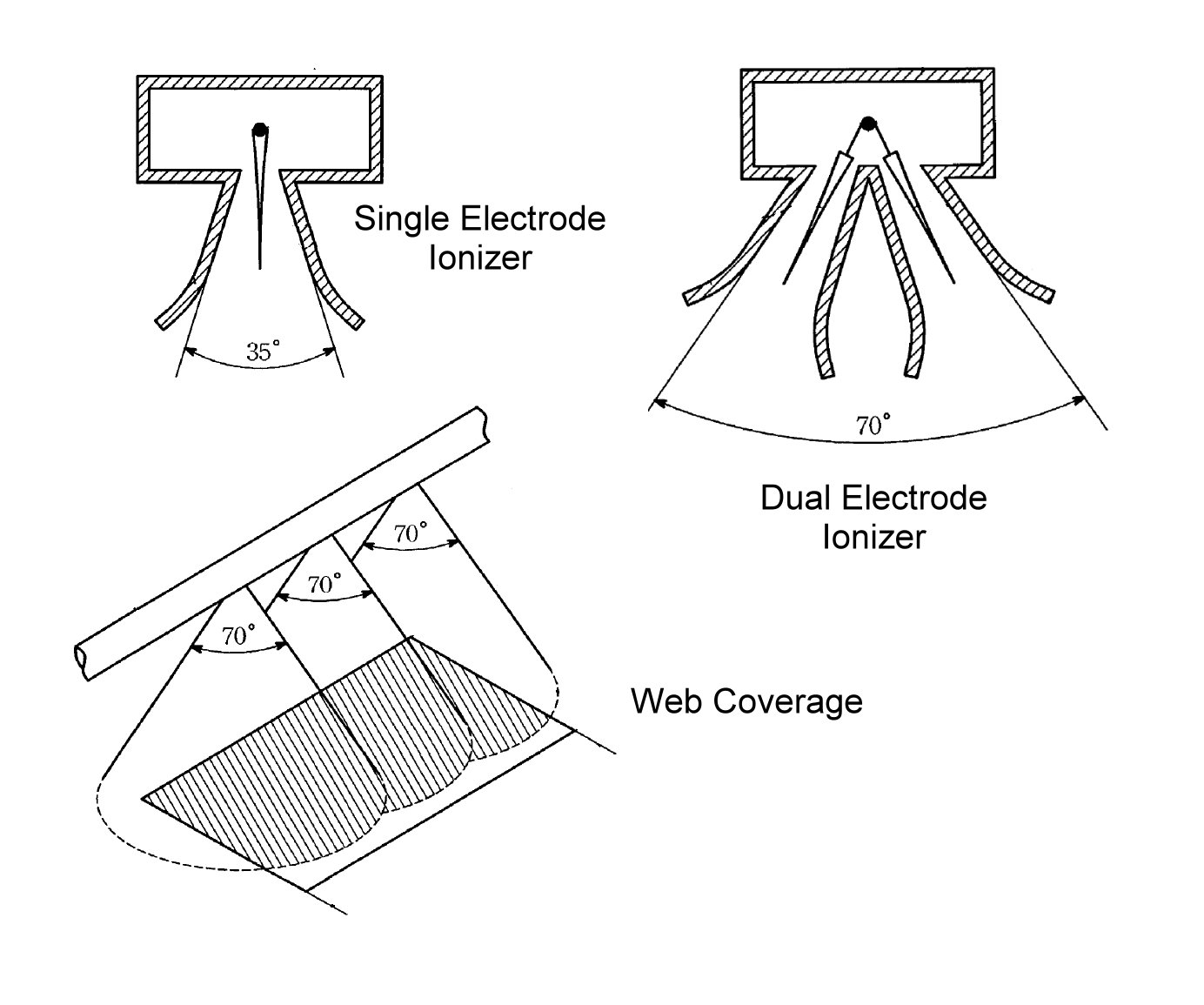
Figure 8. Static elimination air-added system with narrow and wide angle nozzles. Illustration adapted from [10].
The drawing at the top left depicts a section of the ionizer manifold with the corona point and nozzle. Air is injected into the manifold and exits through the nozzles in an ionized state. As shown, the angle of the effective stream of ionized air is about 35 degrees. The spacing between nozzles is on the order of 5 to 10 cm.
In the case of large substrates, the width and transverse speed of the substrate need to be taken into account. By increasing the area of coverage, larger substrates can be accommodated without having to slow down the process. This can be achieved by pairing corona points and placing them at an angle to each other. As a result, the coverage cone will double to 70 degrees.
Static Control of Errant Aerosols in Injet Printers
Lee et al. of Hewlett Packard have described [11] the use of a corona source to capture aerosols that are generated in high speed inkjet printers and presses. Ink aerosols are very small droplets of ink that are produced by the inkjet pens but which do not directly land on the substrate being printed. These droplets will linger and affect the printed colors or create a contamination build up elsewhere in the print system. One traditional approach involves the application of vacuum downstream of the print head. This been found to be only partially effective due to the formation of a boundary layer near the substrate where the vacuum pickup is ineffective.
By placing a corona source immediately downstream of the inkjet pen, the aerosols will become charged and will immediately be attracted to the substrate. Figure 9 depicts the configuration. The illustration to the left shows an end view of a single print bar. The bar typically includes a number of inket pens in staggered rows. The number is dependent upon the width of the web. Adjacent to each pen is the corona source. The illustration to the right depicts the simplest of several possible configurations. This is simply an insulating bar with a groove that holds the corona
electrode.
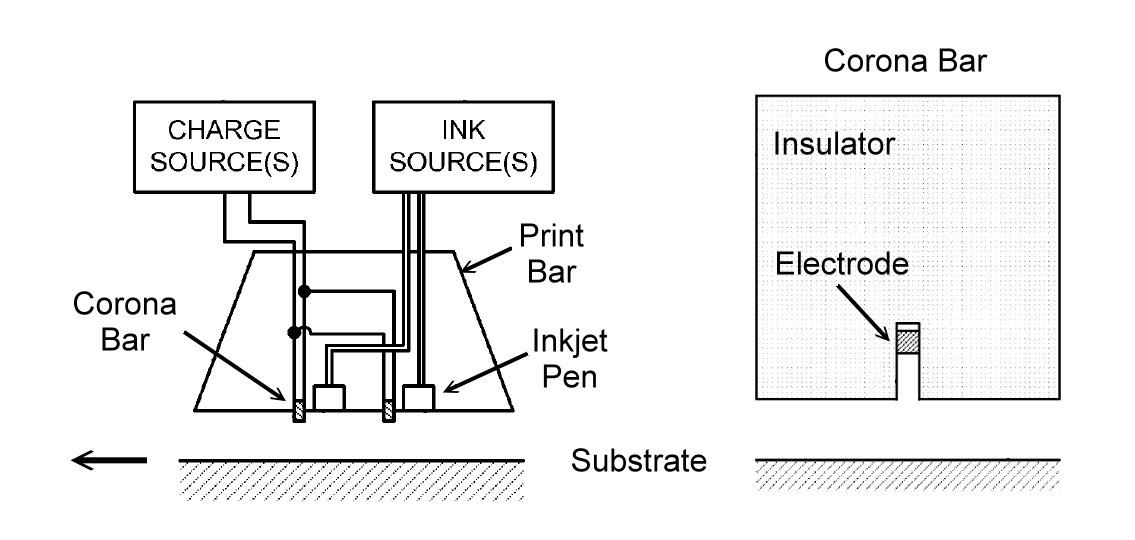
Figure 9. Corona discharge device for the control of inkjet printer aerosols. Illustration adapted from [11].
The Ionic Wind Voltmeter
This is a rather off-beat but interesting application that is somewhat related to the corona discharge. As noted previously, a point corona discharge will result in a breeze that is directed away from the point. Figure 10, published in 1894, depicts a popular demonstration that can be performed with an electrostatic machine [3].
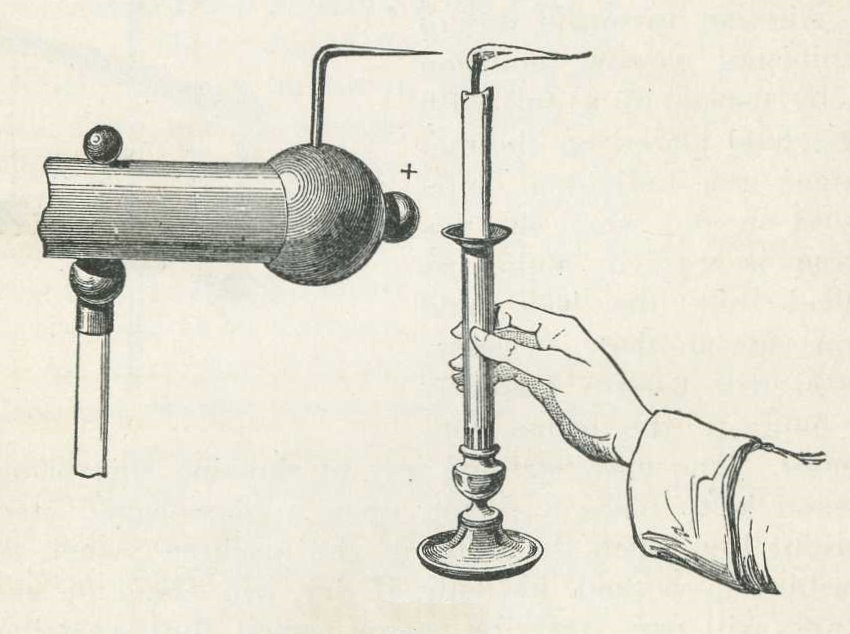
Figure 10. Candle flame deflected by the ionic wind generated by a corona point on an electrostatic machine. Illustration from [3].
A practical application that is related to this effect is the ionic wind voltmeter that was described by Thornton, Waters and Thompson in 1931 [12]. It was also described in F.M. Defandorf in the National Bureau of Standards Handbook 77 and in the Journal of the Washington Academy of Sciences [13].
The device is shown schematically in Figure 11. Defandorf points out that it “merits some attention because it represents a unique application of a thermal method to the measurement of high alternating voltage.”
A heated filament is positioned at the base of a tubular insulating column. Directly below the filament is a metallic ground shield. At the top of the column is a high voltage electrode. The electric field is maintained such that a corona discharge is not formed. In this case, any ions that are present will move back and forth as a result of the alternating field. These strike neutral gas molecules resulting in an increase in molecular motion. The net effect is an increase in the cooling effect on the filament that is proportional to the electric field. The filament is connected to a Wheatstone bridge where the out-of-balance indicator is calibrated in terms of the applied voltage. The action of the filament and bridge is therefore similar to that of a convection Pirani gauge’s filament and associated circuitry. Defandorf concludes by stating that the device “may be constructed to have good sensitivity and is useful as a control device or relay, its indications are affected by change in wave form and an accuracy of only plus or minus 2 percent is claimed for it.”
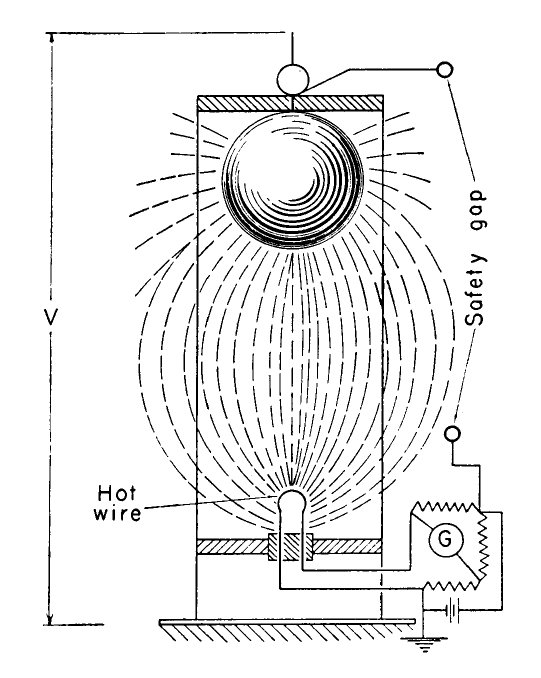
Figure 11. Ionic wind voltmeter according to Defandorf [13].
Summary
Atmospheric pressure low-temperature plasmas are suitable for many applications that we normally associate with vacuum plasma processes. While long mean free path processes can’t be supported at atmospheric pressure, many treatment processes are applicable. With regard to corona processes, a significant application space is in the treatment of polymers to promote adhesion. Another class of application is static elimination and contamination control.
Next month’s column will deal with the mechanisms of dielectric barrier discharges and cold plasma jets..
References
- J. R. Roth, S. Nourgostar, and T. A. Bonds, The One Atmosphere Uniform Glow Discharge Plasma (OAUGDP)—A Platform Technology for the 21st Century, IEEE Trans. Plasma Sci. 35, 233 2007.
- Daphne Pappas, Status and potential of atmospheric plasma processing of materials, J Vac. Sci. Technol. A 29, 020801 (2011).
- Sylvanus P. Thompson, Elementary Lessons in Electricity and Magnetism, MacMillan, 1895.
- Electro-Technic Products https://www.electrotechnicproducts.com
- Ernest H. Pfaff, Electrode arrangement for creating corona, US Patent 4,693,869, issued September 15, 1987.
- Paul I. Terasaki, Domenico Bernoco, Min Sik Park, Gungor Ozturk and Yuichi Iwaki, Microdroplet Testing for HLA-A, -B, -C, and -D Antigens: The Philip Levine Award Lecture, American Journal of Clinical Pathology, Vol. 69, No. 2, 1 February 1978, pp. 103–120
- Katsuhide Manbe, Yasuhiko Ogisu, Kazuaki Goto and Hisao Toya, Corona discharge treating method and apparatus for resin moldings, US Patent 4,836,90, issued June 6, 1989.
- https://tantec.com/corona-treatment-of-cables-cabletec.html
- https://tantec.com/plastic-products-treated-with-corona-treatment-rototec-x.html
- Tsung-Lin Lu and Ying-Chi Chen, Ionizer, US Patent 6,987,658, issued January 17, 2006.
- Michael H. Lee, Napoleon J. Leon, Henyk Birecki and Omer Gila, Apparatus for capturing aerosols, US Patent 8,727,488, issued May 20, 2014.
- Thornton, Waters and Thompson,Jour. Inst. Electr. Eng., 69: 533, 1931.
- F.M. Defandorf, The Ionic Wind Voltmeter in The Measurement of High Voltage, Journal of the Washington Academy of Sciences, Vol. 38, No. 2, February 15, 1948, pg. 48.
About the author:
Steve Hansen is a consultant specializing in vacuum technology related product development and education. He retired from MKS Instruments in 2009, the company he joined in 1995. In his years with MKS he was responsible for developing vacuum, instrumentation and plasma training courses as well as MKS’ line of vacuum and plasma training equipment. He was also responsible for the calibration product line and the US service operations for several of the company’s product lines. Steve’s background also includes many years in the semiconductor industry where he was involved in process development. With a nearly lifelong interest in vacuum technology, Steve founded the educational journal “the Bell Jar” in 1992. A web presence was established in 1994. With a target audience of amateur scientists and educators, the American Vacuum Society has considered “the Bell Jar” to be of sufficient significance to warrant a place on the society’s “Vacuum Science & Technology Timeline: 1500-2007.” Steve continues to be active with monthly columns in Vacuum Technology & Coating. He is also involved with educational product development. This included a line of vacuum and plasma training equipment that was developed for The Science Source. All of the documentation for this equipment is now available on line at belljar.net. Steve received his BSEE degree from Northeastern University in 1972 and is the holder of two patents in the field of semiconductor manufacturing. He and his wife now reside in Owl’s Head, Maine.

